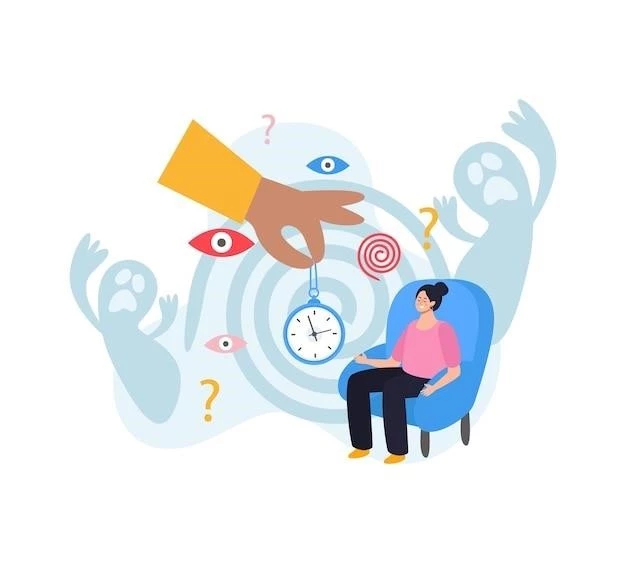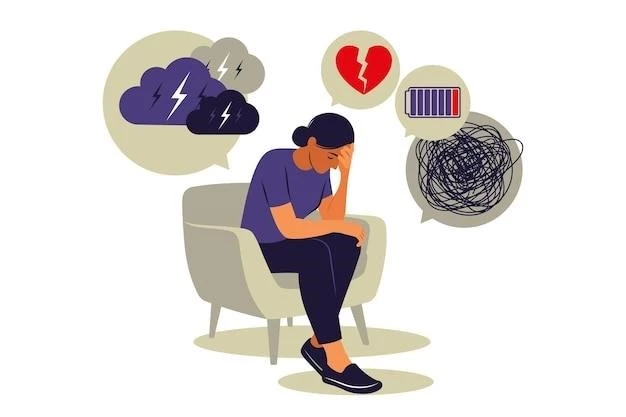Introduction to Panic Disorder
Panic disorder and panic attacks are distinct entities in the realm of psychiatry. While characterized by recurrent, unexpected panic attacks, panic disorder is a separate condition. It is essential to differentiate between panic attacks as defined by the DSM and the broader spectrum of panic disorder.
Definition and Distinction from Panic Attacks
Panic disorder is a distinct condition from panic attacks, characterized by recurrent, unexpected episodes of intense fear. Understanding the difference between panic disorder and panic attacks is crucial in diagnosing and managing these mental health challenges. While panic attacks are acute episodes of overwhelming fear, panic disorder involves persistent anxiety and anticipatory fear of future attacks.
Panic disorder is a prevalent mental health condition characterized by intense, recurrent, and unexpected panic attacks. The impact of panic disorder on mental health can be profound, leading to disruptions in daily life and functioning. Understanding the prevalence and mental health implications of panic disorder is crucial in addressing and managing this challenging condition.
Prevalence and Impact on Mental Health
Panic disorder is a prevalent mental health condition with a significant impact on individuals’ mental well-being. Understanding the prevalence and implications of panic disorder in mental health is vital for effective management and support.
Physical and Psychological Symptoms
Individuals with panic disorder experience a range of physical symptoms such as a racing heart, sweating, and shortness of breath during panic attacks. These symptoms are often accompanied by psychological manifestations like intense fear, worry about future attacks, and a feeling of losing control. Understanding the interplay between physical and psychological symptoms is essential in managing panic disorder effectively;
Possible Causes and Triggers
The exact causes of panic disorder are not fully understood, but factors such as genetic predisposition, major life transitions, and physiological responses may contribute to its development. Major life events, genetic links, physiological false alarms, and misinterpretation of physical symptoms can all potentially trigger or exacerbate panic disorder symptoms.
Diagnosis of Panic Disorder
The diagnosis of panic disorder involves a thorough assessment based on specific criteria outlined in the Diagnostic and Statistical Manual of Mental Disorders (DSM-5). A comprehensive evaluation by a healthcare provider is essential to determine the presence of panic disorder and differentiate it from other mental health conditions.
Criteria for Diagnosing Panic Disorder
The Diagnostic and Statistical Manual of Mental Disorders (DSM-5) outlines specific criteria for diagnosing panic disorder. Healthcare providers evaluate symptoms like recurrent panic attacks, persistent anxiety, and anticipatory fear to establish a proper diagnosis. Understanding these diagnostic criteria is essential for accurate identification and treatment of panic disorder.
The evaluation of panic disorder typically involves a medical assessment to rule out physical causes of symptoms and a thorough psychological evaluation to understand the individual’s mental health status. Healthcare providers may use standardized questionnaires and clinical interviews to gather information necessary for an accurate diagnosis of panic disorder and to develop an appropriate treatment plan.

Treatment Options for Panic Disorder
The treatment of panic disorder typically involves a combination of medication therapy, psychotherapy (including cognitive behavioral therapy-CBT), and lifestyle modifications. These approaches aim to reduce the frequency and intensity of panic attacks while improving overall well-being.
Medical Assessment and Evaluation
Medical assessment and evaluation for panic disorder involve ruling out physical causes of symptoms through thorough physical exams and lab tests. Additionally, psychological evaluations, including interviews and questionnaires, help in understanding the individual’s mental health status for accurate diagnosis and treatment planning.
Psychotherapy, including Cognitive Behavioral Therapy (CBT)
Psychotherapy, particularly Cognitive Behavioral Therapy (CBT), is an effective treatment option for panic disorder. CBT helps individuals identify and modify negative thought patterns and behaviors contributing to anxiety and panic attacks. By learning coping strategies and relaxation techniques, individuals can manage their symptoms and improve their quality of life;
Role of Lifestyle Modifications and Relaxation Techniques
Lifestyle modifications and relaxation techniques play a crucial role in managing panic disorder. Techniques such as deep breathing, meditation, yoga, and regular exercise can help reduce stress levels and promote overall well-being. Adopting a healthy lifestyle that includes proper nutrition, regular physical activity, and adequate sleep can complement other treatment strategies for individuals with panic disorder.
Living with Panic Disorder
Living with panic disorder can present significant challenges, impacting daily life and well-being. Individuals with panic disorder face the complexities of managing sudden, intense fear and physical symptoms. Understanding how to navigate these challenges and seek appropriate support is crucial for enhancing one’s quality of life while coping with panic disorder.
Challenges Faced by Individuals with Panic Disorder
Living with panic disorder presents individuals with significant challenges, including managing sudden and intense fear, physical symptoms, and the fear of future panic attacks. Coping with these challenges and seeking appropriate support are essential for improving quality of life while dealing with panic disorder.
Possible Long-Term Outlook and Recovery Possibilities
Living with panic disorder may pose challenges, but long-term recovery is possible. By understanding symptoms, causes, and available treatment options, individuals with panic disorder can work towards managing their condition effectively and improving their quality of life. With the right support and strategies in place, individuals can navigate the journey towards recovery from panic disorder.
Factors Influencing Panic Disorder
Genetic predisposition, major life transitions, and physiological false alarms are critical factors that can influence the development of panic disorder. Understanding these influences is essential in addressing the complexities of panic disorder and its management.
Genetic Predisposition and Family History
Studies suggest a genetic predisposition to panic disorder, particularly when there is a family history of the condition. Individuals with close relatives affected by panic disorder may have an increased risk of developing the disorder, especially during times of stress or major life transitions. Understanding the role of genetic factors and familial patterns is important in the assessment and management of panic disorder.
Impact of Major Life Transitions and Stressful Events
Major life transitions and stressful events, such as graduating, getting married, having a first child, and recent loss or separation from a loved one, can contribute to the development of panic disorder. These significant life changes may trigger intense anxiety and fear, potentially leading to the onset of panic disorder symptoms. Understanding the impact of such transitions and events is essential in managing panic disorder effectively.
Risk Factors and Prevention Strategies
Identifying personal triggers and risk factors is crucial in managing panic disorder effectively. Lifestyle modifications, such as reducing stress through relaxation techniques and avoiding triggers, can help minimize the frequency and intensity of panic attacks. By understanding individual risk factors and implementing preventive strategies, individuals can better navigate the challenges posed by panic disorder.
Identifying Personal Triggers and Risk Factors
One essential aspect of managing panic disorder is identifying personal triggers and risk factors that can exacerbate symptoms. By recognizing specific situations, environments, or stressors that contribute to panic attacks, individuals can take proactive steps to minimize these triggers and improve their overall well-being. Understanding the unique factors that impact an individual’s experience of panic disorder is key to developing effective coping strategies and preventing the onset of severe symptoms.
Lifestyle Modifications to Reduce Panic Attacks
Implementing lifestyle modifications is crucial in managing panic disorder and reducing the frequency of panic attacks. Strategies such as identifying triggers, maintaining a healthy sleep routine, incorporating regular exercise, and practicing stress-reducing activities like mindfulness or yoga can effectively help individuals minimize the impact of panic attacks on their daily lives. By making positive lifestyle changes, individuals with panic disorder can improve their overall well-being and enhance their quality of life.

Coexistence of Panic Disorder with Other Conditions
Panic disorder may coexist with anxiety disorders, depression, and substance use disorders. Understanding the relationship between panic disorder and these conditions is crucial for comprehensive treatment and effective management. Addressing the comorbidity of panic disorder with other mental health disorders is essential for enhancing overall well-being and quality of life.
Relationship between Panic Disorder and Anxiety Disorders
Panic disorder often coexists with other anxiety disorders, such as generalized anxiety disorder. The relationship between panic disorder and anxiety disorders is complex, with overlapping symptoms like intense fear and worry. Understanding how these conditions interplay is crucial for accurate diagnosis and effective treatment approaches tailored to the individual’s specific needs.
Comorbidity with Depression and Substance Use Disorders
Panic disorder often coexists with depression and substance use disorders. The combination of panic disorder with these conditions can complicate treatment approaches and worsen overall mental health outcomes. Understanding the relationship between panic disorder, depression, and substance use disorders is essential in developing comprehensive treatment strategies that address all aspects of an individual’s well-being.
Professional Guidelines and Recommendations
Clinical practice guidelines emphasize the importance of prompt treatment for panic disorder to alleviate symptoms and prevent worsening of the condition. Seeking help from licensed therapists and mental health professionals is crucial for the effective management of panic disorder. By following established guidelines and recommendations, individuals can access the appropriate support and interventions necessary for their well-being.
Clinical Practice Guidelines for the Treatment of Panic Disorder
Clinical practice guidelines recommend prompt treatment for panic disorder to alleviate symptoms and prevent exacerbation. Seeking help from licensed therapists is crucial for effective management. Following established guidelines ensures access to appropriate support and interventions for well-being.
Importance of Seeking Help from Licensed Therapists
Seeking help from licensed therapists is vital for individuals with panic disorder to receive proper diagnosis, treatment, and support. Licensed therapists can offer specialized interventions such as cognitive behavioral therapy (CBT) to help individuals manage panic disorder effectively. Their expertise and guidance play a crucial role in improving the overall well-being and quality of life of individuals struggling with panic disorder.
Research and Future Directions
Ongoing studies focus on understanding the pathophysiology of panic disorder and evaluating treatment outcomes to enhance therapeutic strategies. Potential advancements in research aim to provide insights into the underlying mechanisms of panic disorder and develop innovative interventions for better management and recovery. Continued research efforts offer hope for improved outcomes and quality of life for individuals living with panic disorder.
Ongoing Studies on Panic Disorder and Treatment Outcomes
Current research focuses on studying panic disorder’s pathophysiology and assessing treatment outcomes to improve therapeutic approaches. Ongoing studies aim to enhance understanding of panic disorder mechanisms and develop innovative interventions for better management and recovery. Continuous research efforts offer hope for enhanced outcomes and improved quality of life for individuals grappling with panic disorder.
Potential Advancements in Understanding the Pathophysiology of Panic Disorder
Emerging research focuses on advancing the understanding of the pathophysiology of panic disorder. Scientists are exploring the intricate neurobiological and psychological mechanisms underlying panic attacks to enhance treatment strategies. By uncovering new insights into the physiological and psychological processes involved in panic disorder, researchers strive to develop more targeted and effective interventions for individuals struggling with this condition.
Conclusion
In conclusion, understanding panic disorder and its implications on mental health is crucial in providing appropriate support and treatment. Through ongoing research and advancements in understanding the pathophysiology of panic disorder, we can develop more effective interventions and improve outcomes for individuals experiencing this condition. Seeking help from licensed therapists and following clinical guidelines are essential steps in managing panic disorder and enhancing quality of life.
